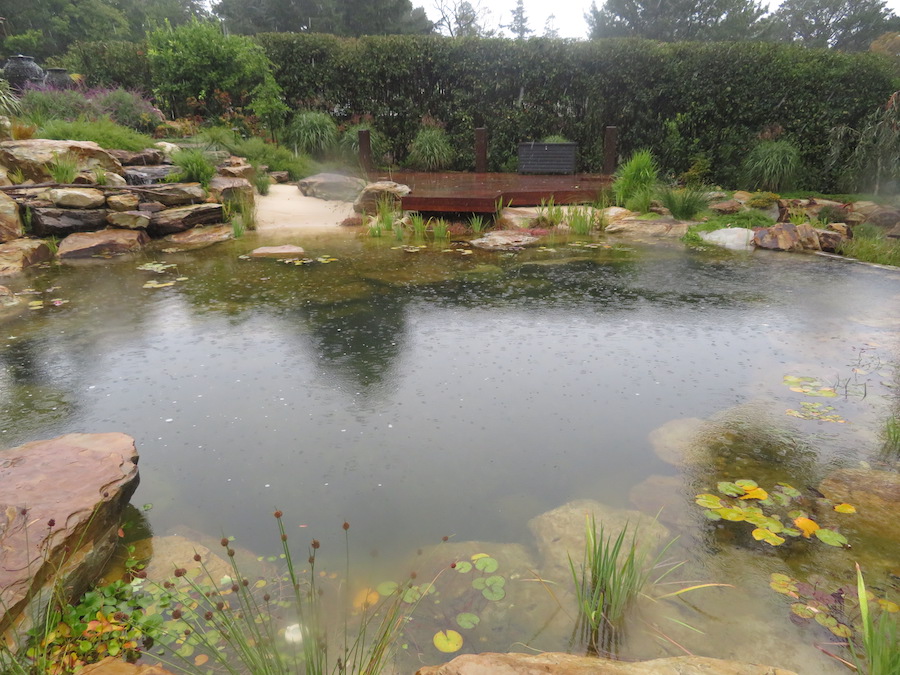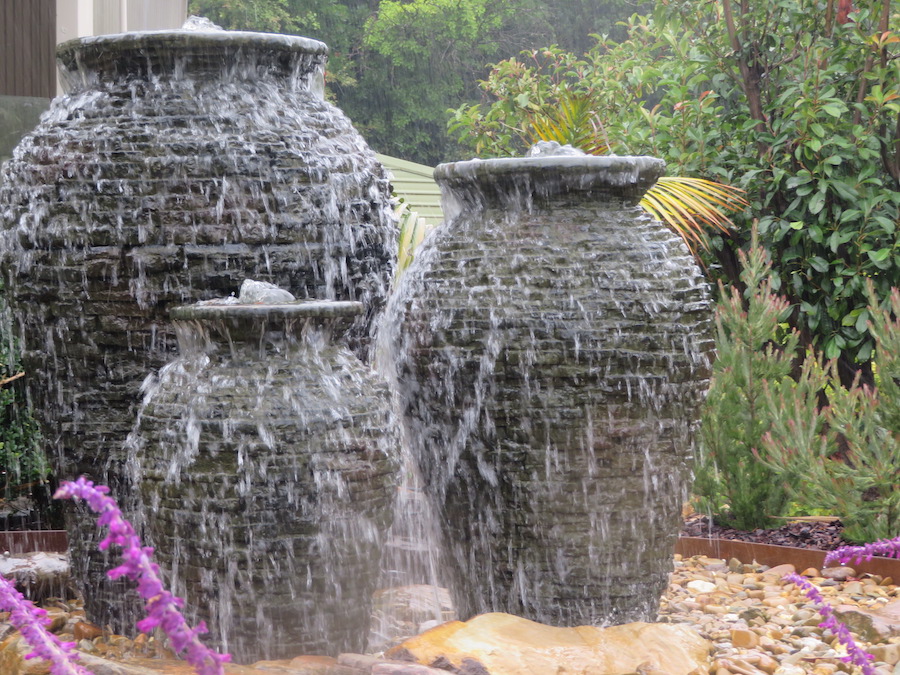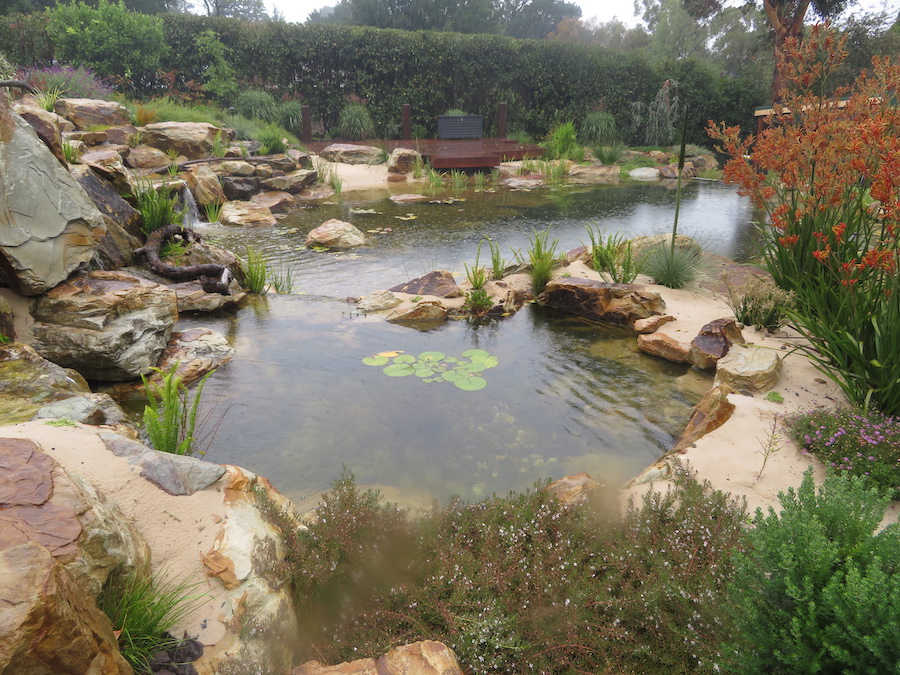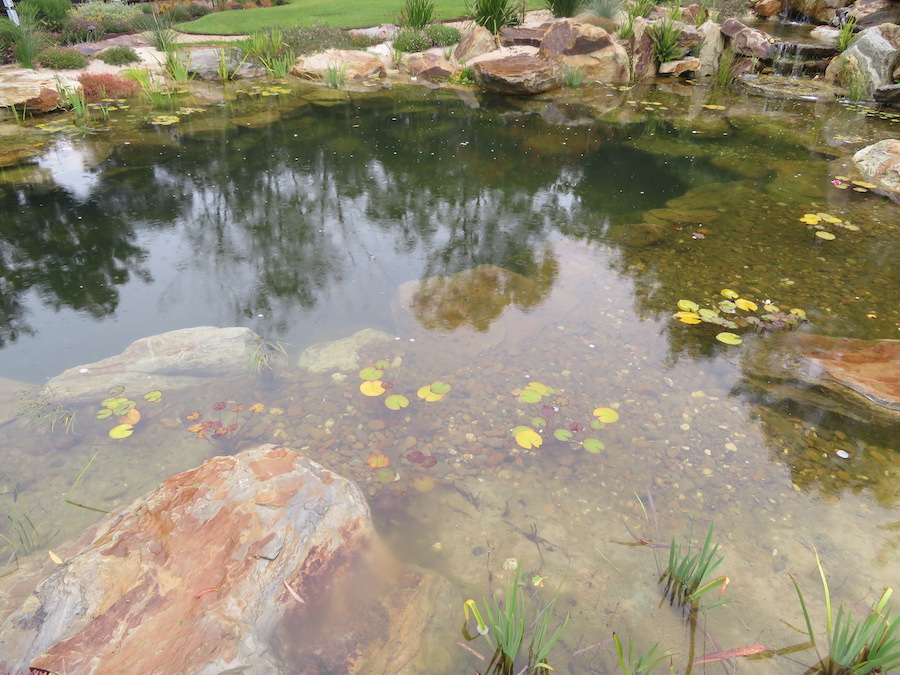In the case of Cascades water garden, at Crafers in South Australia it is the water that goes round and round, all 750,000 litres of it most of which is held in hidden reservoirs while at any one time about 150,000 litres are visible in the pools, ponds, waterfalls and cascades of the garden itself.
Described best as a constructed billabong the garden is mainly water with plantings of native riparian plants here and there to create the feeling of being a natural waterway. The purpose, apart from beauty and a very interesting place to see, is to provide a home to several species of threatened native fishes in a setting where they can breed and live within a relatively natural setting.

Using more than 300 tons of Carey Gully stone and with three months worth of continuous excavation the billabong occupies a space not much smaller than a normal-sized suburban block. The hillside from which it has been cut allows for a good flow of water through the various ponds, which are up to 2m deep in some parts, and allows every feature to be seen from the perimeter and several vantage points. Eventually a large, dead red gum trunk will be submerged in one of the deepest spots to replicate a natural feature in most billabongs and provide shade and sheltering spots for the fish.

From the highest point in the garden three book-leaf slate sculptures in the shape of big garden pots bubble and splash water over the stone artwork and trickles away via a series of small streamlets to disappear into a sandy swamp or tumble over rocks into the main pool. The swampy area feeds the water into a deep pool via a series of tinkling waterfalls from where it flows over large rock ledges into the main pool. With sedges and grasses getting established in cracks in the rocks and in the sandy margins of the pools the setting is quickly developing a very natural feel.
The water flow becomes much calmer in the biggest pool and scarcely a ripple disturbs the reflective surface. Only patches of water-lilies break up the mirror to the sky and tiny fish dart out from under the lily pads into the sunlight. It is a fine, relaxing thing to sit at the edge and watch the dragonflies dart backwards and forwards over the water, and to see the small, native birds working the flowers for nectar or foraging in the growth for insects.

At the further end of the billabong a rushing cascade of waters draws water from the body of the pool and carries away dust particles, fallen leaves and floating insects. The water disappears into a broad beach of shingle and river-worn rocks and so what has gone around has come around.
Or so it seems. But it is not as simple as that. Hidden deep is a system of sumps, reservoirs, holding tanks, filter beds and pumps that keeps the whole thing clean and healthy with no risk of stagnation and de-oxygenation of the water that would be fatal to the fish and frustrate the intention for the set-up to act as a significant exercise in conservation and environmental rescue. Although the water is clear it is not sparkly bright as a swimming pool would be. Neither does it smell of chlorine or anything decomposing on the bottom. Daily testing ensures the acid balance and nutrient load are well within defined limits set by staff from the University of Adelaide, who are monitoring the fish for their health and breeding rates. Testing shows that the water is alive with micro-organisms as living water should be for the fish to thrive. Should the level of organisms fall below the range found in natural water courses they can be added by hand.
This all sounds quite extraordinary, and so it is but there is another factor at play too and that is the whole set-up is independent of electricity and water supply. It is ‘off-the-grid’, harvesting and storing all the water it needs from the roofs of adjacent buildings, and generating (and storing) electricity from solar arrays on the roof-tops.

Being in a high rainfall area of the Adelaide Hills means that sometimes heavy rains cause an excess of water to be harvested by the system. Because the water in the pools, reservoirs and holding tanks is constantly monitored for its microbial levels and manages to keep them at levels normal in natural waterways the overflow can be discharged harmlessly into a local stream that feeds eventually into the Onkaparinga River and the Mt Bold Reservoir, which forms part of Adelaide’s water supply; itself managed by SA Water to ensure a safe and reliable supply of water for human consumption.
Thus not only does the water go round and round in the Cascades garden billabong but, in time it also goes round and round in the natural evaporation and rainfall system that constitutes our Mediterranean weather pattern.
Quite clever. I think you will agree.
